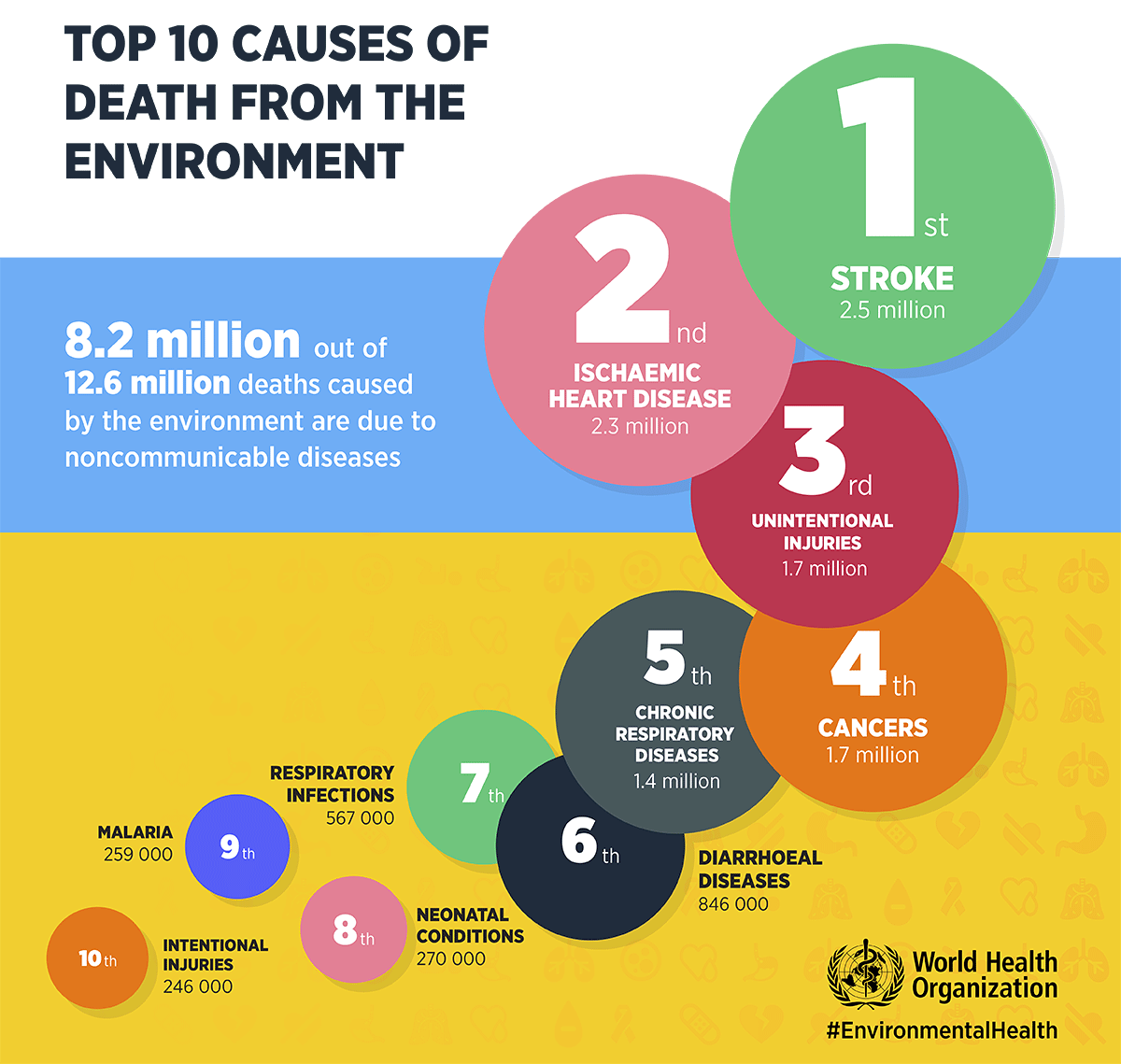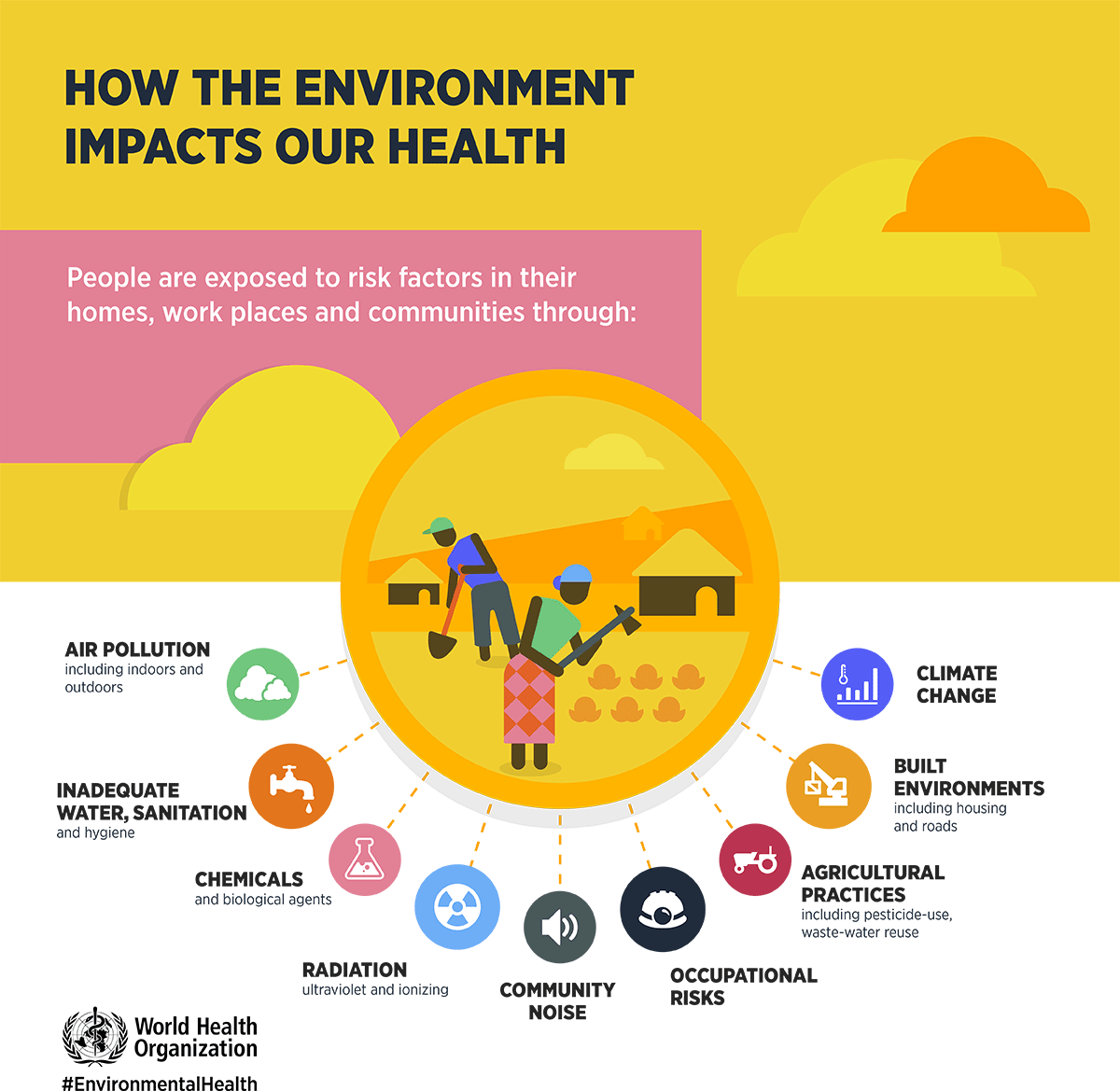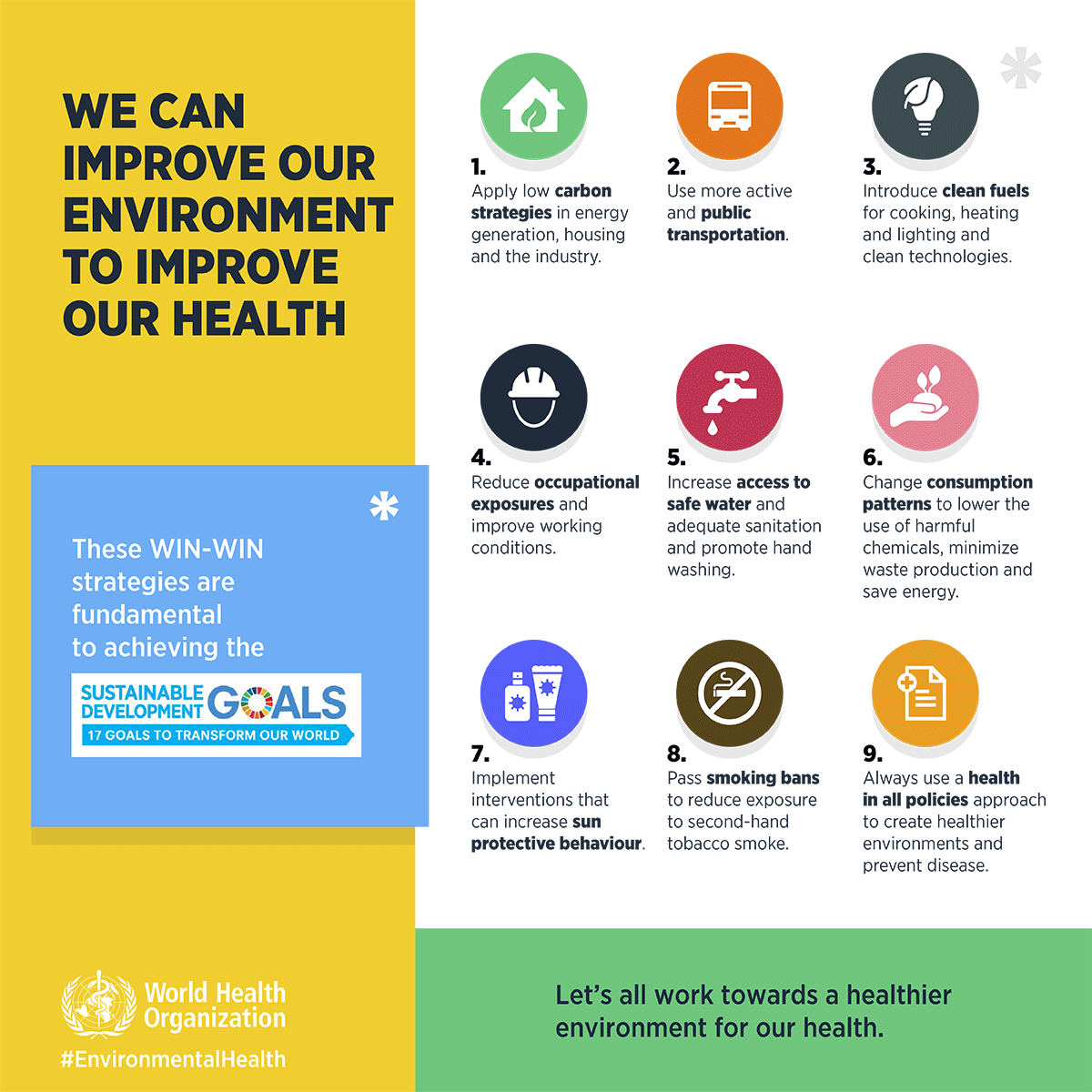Resources section 1: Introduction to Environmental Health
Environmental health is a branch of public health that examines the interaction of the environment with human health and disease. The environment affects human health in several ways. The interaction between human health and the environment have been proven to significantly impact human health through direct exposure to harmful agents, or indirectly, by disrupting life-sustaining ecosystems.
The World Health Organization (WHO) infographic below shows the data on the death rate in each region due to environmental degradation.

Reprinted from PHE Infographics: Environmental impacts on health. Accessed June 10th, 2020
In another WHO infographic, the data show the top ten diseases caused by environmental degradation.

Reprinted from PHE Infographics: Environmental impacts on health. Accessed June 10th, 2020
Also from WHO is a demonstration of how environment degradation impacts health among specific age groups and socioeconomic background.

Reprinted from PHE Infographics: Environmental impacts on health. Accessed June 10th, 2020
Many individuals in high income countries, middle income, and low-income countries are impacted by environmental degradation. Thus, clean water, air, plant, and food supplies are important to our health and well-being.
1.1 Definition of Environmental Health
There are several definitions of environmental health; however, this curriculum will focus on the World Health Organization’s (WHO) definition. The US National Library of Medicine website provides the definition of environmental health from various organizations, including WHO, whose definition is: "Environmental health addresses all the physical, chemical, and biological factors external to a person, and all the related factors impacting behaviors. It encompasses the assessment and control of those environmental factors that can potentially affect health. It is targeted towards preventing disease and creating health-supportive environments. This definition excludes behavior not related to environment, as well as behavior related to the social and cultural environment, and genetics". – World Health Organization
1.2 Determinants of Environmental Health
As mentioned on the US National Library medicine website, there are several determinants of environmental health. The table below provides examples of each of the determinant of the environmental health.
|
Physical |
Noise; Ionizing and non-ionizing radiation Temperature |
|
Chemical |
Air pollution; Toxic wastes; Pesticides |
|
Biologics |
Disease organisms present in water and food (bacteria, viruses, parasites, and other pathogenic organisms); Insect and animal allergens |
|
Social |
Housing conditions; Infrastructure |
|
Psychosocial |
Access to green space; Parks in neighbourhood; Stress |
1.3 Environmental Impacts of Health
Many of the global health problems are all linked to environmental degradation. Environmental risk factors, such as air, water and soil pollution, chemical exposures, climate change and ultraviolet radiation, contribute to several diseases and injuries.
There are several factors in the environment that are linked to human health. This WHO infographic include examples on how the environment impacts human health.

Reprinted from PHE Infographics: Environmental impacts on health. Accessed June 10th, 2020
Maria Neira, a Spanish physician and director at WHO, created a PowerPoint presentation on the statistics of burden of specific diseases and illnesses caused by particular environmental factors. Please look at slides 2-26 to have a better understanding of this topic. A video by WHO also shows how environmental risk factors contribute to several illnesses and diseases worldwide.
1.4 Health Promotion and Disease Prevention
Environmental health aims to prevent human injury and illness and promote well-being. Many healthcare professionals and policy analysts find ways to limit exposure of physical, chemical, and biological agents in air, water, soil, food, and other environmental settings that may negatively impact human health.
The next WHO infographic illustrate examples on ways to sustain the environment in order to improve human health.

Reprinted from PHE Infographics: Environmental impacts on health. Accessed June 10th, 2020
The video below, created by the United Nations Environmental Program (UNEP), also provides strategies and implementations to tackle environmental problems in order to protect human health.
Maria Neira’s PowerPoint presentation above, from slides 19-30, provides examples in ways to improve the environment to protect human health as well.
